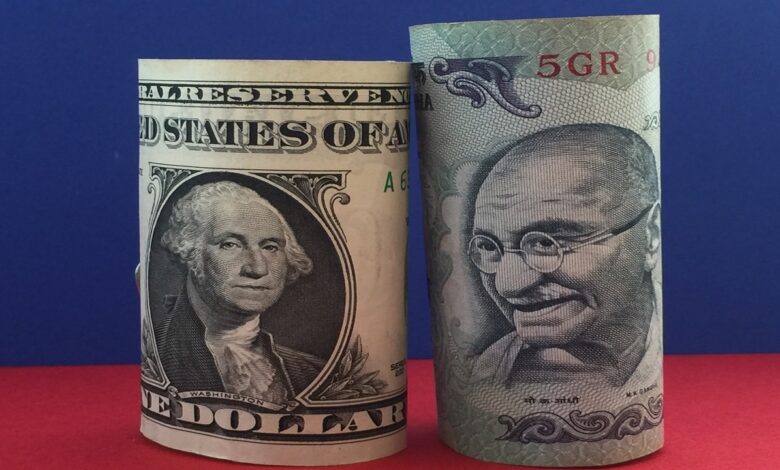Indian Rupee plunges to ₹86.50: Factors behind INR’s sharp fall against the US Dollar

HomeMarket NewsCurrency NewsIndian Rupee plunges to ₹86.50: Factors behind INR’s sharp fall against the US Dollar
The Indian Rupee hits ₹86.58 against the US Dollar as market speculation intensifies and the Federal Reserve signals no imminent rate cuts
 By Latha Venkatesh January 13, 2025, 6:47:30 PM IST (Published)
By Latha Venkatesh January 13, 2025, 6:47:30 PM IST (Published)
On Monday, the Indian rupee recorded its sharpest single-day fall in two years, closing at ₹86.50 and hitting an intraday low of ₹86.58 against the US dollar. The rupee’s drop was notably larger than the declines experienced by other Asian currencies, such as the Thai baht, the Philippine peso, and the Malaysian ringgit, which fell between 0.3% and 0.6%. Meanwhile, the Chinese yuan remained relatively steady, even appreciating slightly.
US dollar strength and speculation behind the rupee’s sharp decline
The primary driver of the rupee’s sharp depreciation was the strong performance of the US dollar. The dollar index, which measures the greenback against a basket of major currencies, rose by 0.43% on Friday, spurred by robust US jobs data. This data reinforced expectations that the Federal Reserve would maintain higher interest rates for a longer period, diminishing hopes for any rate cuts in 2025. The dollar’s strength weighed on all emerging market currencies, but the rupee’s underperformance was particularly notable.
In past instances of significant rupee depreciation, the Reserve Bank of India (RBI) has intervened aggressively to stabilise the currency by supplying dollars. However, this time, the RBI adopted a more measured approach. While the central bank was reportedly selling dollars, it acted in tandem with the market rather than attempting to defend specific levels like ₹86, ₹86.25, or ₹86.50. This lack of aggressive intervention allowed speculators to drive the rupee lower.
Rising yields and liquidity concerns add pressure on the rupee
Speculation played a significant role in Monday’s sharp decline. Traders holding long rupee positions took profits, while others bet on further depreciation in the absence of strong RBI intervention. Market estimates suggest the rupee could fall further, with Standard Chartered projecting a year-end level of ₹87.75. Intraday volatility remains high, influenced by uncertainty around the dollar index’s movements and potential future RBI actions.
The rupee’s fall was accompanied by rising bond yields. The yield on India’s 10-year government bond rose from 6.8% to 6.84%, mirroring a sharp increase in US Treasury yields. On Friday, the US 10-year yield climbed by 7 basis points, and the 30-year yield exceeded 5%. Higher yields in the US reduce the attractiveness of emerging market assets, leading to capital outflows and additional pressure on currencies like the rupee.
In the Indian money market, call money rates surged to 7%, well above the RBI’s repo rate of 6.5%. This spike reflects a liquidity shortage, partly due to the RBI’s prolonged dollar sales. To address this, the central bank conducted a ₹50,000 crore variable-rate repo auction, injecting liquidity into the system. However, concerns over tightening liquidity and rising yields persist.
Adding to the pressure on the rupee was the diminished prospect of rate cuts, both in India and the US. Bank of America has forecasted no Federal Reserve rate cuts in 2025, and Indian banks like HDFC Bank and Standard Chartered have similarly indicated no expectations of an RBI rate cut in February. The overnight index swap market suggests the earliest potential rate cut by the RBI may not occur until June 2025, if at all.
(Edited by : Ajay Vaishnav)



